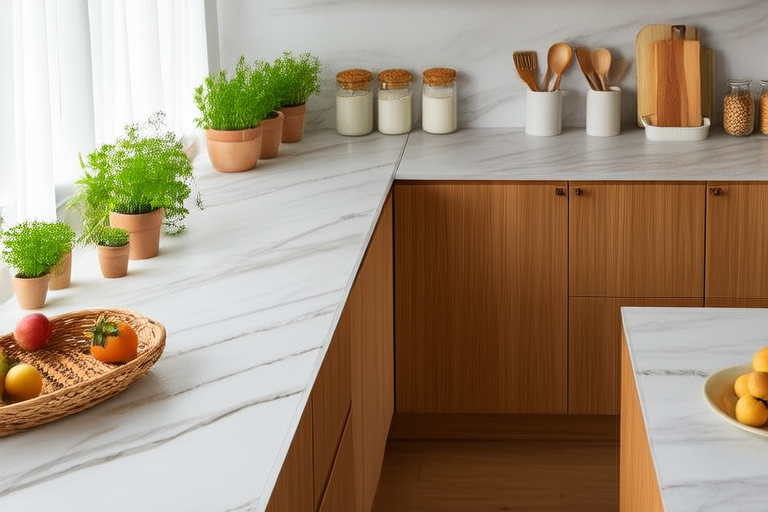Transform Your Messy Kitchen into an Organized Haven with These Simple Tricks
Introduction
A well-organized kitchen is not just a dream; it’s a reality you can achieve with a few simple tricks. An organized kitchen can save you time, reduce stress, and make cooking more enjoyable. Whether you’re a seasoned chef or a beginner in the kitchen, keeping your space tidy and efficient can transform your culinary experience. In this article, we’ll explore practical tips and strategies to help you turn your messy kitchen into an organized haven.
Decluttering: The First Step
Before you can organize your kitchen, you need to declutter it. This process involves removing unnecessary items and sorting through what you have. Start by going through every drawer, shelf, and cabinet. Ask yourself these questions:
- Do I use this item regularly?
- Does this item still work properly?
- Can I replace this item with something more functional or stylish?
Create a Donation Box
As you go through your kitchen items, create a donation box for things you no longer need but are still in good condition. Items like unused pots, pans, and utensils can be donated to local charities or community centers. This not only clears up space but also helps those in need.
Dispose of Broken Items
Don’t forget to dispose of broken or unusable items. Broken appliances or utensils take up valuable space and can be hazardous. Consider recycling metal items if possible.
Storage Solutions: Maximizing Space
Once you’ve decluttered, it’s time to think about how to store everything efficiently. Proper storage solutions can make a huge difference in keeping your kitchen organized.
Use Drawer Dividers
Drawer dividers are a great way to keep utensils, spices, and other small items neatly organized. They prevent items from getting lost at the bottom of drawers and make it easier to find what you need quickly.
Install Shelves and Hooks
Adding shelves and hooks can provide extra storage space for pots, pans, and hanging items like aprons and dish towels. Over-the-door organizers are also a great option for storing spices, cleaning supplies, and other essentials.
Utilize Vertical Space
Don’t forget about the vertical space in your kitchen. Installing shelves above cabinets or using wall-mounted racks can help you make the most of your available space.
Labeling: The Key to Efficiency
Labeling may seem like a small detail, but it can make a big difference in keeping your kitchen organized. Labels help you quickly identify where items belong, making it easier to put things back in their place after use.
Label Containers
If you use containers to store dry goods like rice, pasta, or flour, label them clearly. This prevents confusion and ensures that you always know what’s inside.
Color-Coding
Consider color-coding your labels for different types of items. For example, red labels for spices, blue for baking supplies, and green for cleaning products. This system can help you locate items faster and keep your kitchen looking neat.
Cleaning Routines: Maintain Your Organization
Maintaining an organized kitchen requires regular cleaning routines. A clean kitchen is not only more pleasant to work in but also safer and healthier.
Daily Cleanup
Make it a habit to clean up your kitchen daily. Wipe down countertops, wash dishes, and sweep the floor. This prevents clutter from building up and makes it easier to maintain order.
Weekly Deep Cleaning
Set aside time each week for a deep cleaning session. This includes scrubbing appliances, sanitizing surfaces, and checking expiration dates on stored food items.
Real-Life Example: Organizing a Small Kitchen
Let’s consider a real-life scenario: Sarah has a small kitchen with limited storage space. She starts by decluttering her drawers and cabinets, donating unused items, and disposing of broken ones. Next, she installs drawer dividers for utensils and spice jars, and uses over-the-door organizers for cleaning supplies. To maximize vertical space, she adds wall-mounted racks for pots and pans. Finally, she labels all containers and implements a daily cleanup routine. As a result, Sarah’s kitchen feels more spacious and functional, and she enjoys cooking more.
Conclusion
Transforming your messy kitchen into an organized haven doesn’t require drastic changes. By following these simple tricks—decluttering, utilizing proper storage solutions, labeling items, and maintaining regular cleaning routines—you can create a more efficient and enjoyable cooking space. Remember, organization is an ongoing process, so stay consistent with your efforts. With these tips, you’ll be well on your way to enjoying a clutter-free kitchen that enhances your culinary experience.
Actionable Tips:
- Start small: Begin with one area of your kitchen and gradually move to others.
- Involve family members: If you share your kitchen, encourage everyone to participate in maintaining its organization.
- Regularly reassess: Periodically review your kitchen organization to ensure it still meets your needs and adjust as necessary.
By implementing these strategies, you can turn your kitchen into a functional and inviting space that brings joy to your daily cooking and dining experiences.
